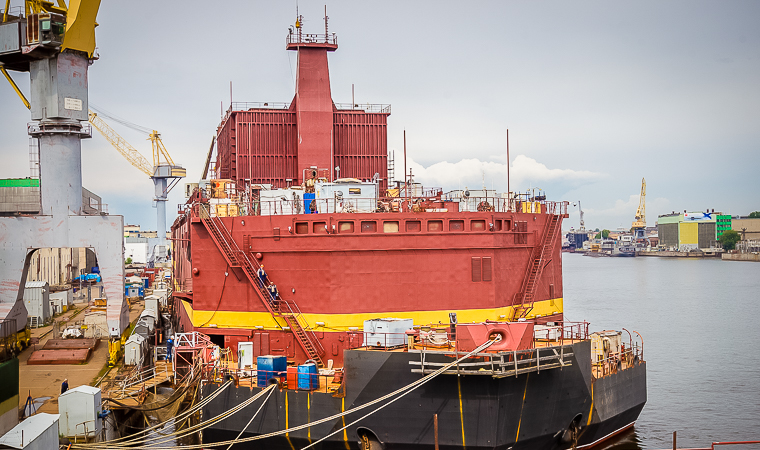
Absolute transparency
back to contentsNorway’s Foreign Minister Børge Brende sent Rosatom CEO Alexei Likhachev a letter to express his deep appreciation of the cooperation between Russia and Norway in the field of radiation safety, notably the joint efforts of Rosatom and the Norwegian Radiation Protection Authority (NRPA). “Our dialog over the transportation of Akademik Lomonosov is a good example of neighborly cooperation. We are grateful to Rosatom for taking Norway’s concerns into account,” says the letter.
The innovative nature of the floating nuclear power plant (FNPP) has made it difficult to apply the provisions of the current maritime law to floating nuclear power units. “The maritime law lags behind the development of industry and does not yet contain the definition of a non-self-propelled floating nuclear facility,” Alexei Likhachev said at a press conference last July. “This is the reason why many of the questions asked by our neighbors and partners in the Baltic region have no legal solution.” According to Mr. Likhachev, Rosatom decided to load nuclear fuel as close to the place of operation as possible in order to avoid multiple interpretations of legal documents governing the transportation of the floating power unit from St. Petersburg to Pevek (Chukotka Peninsula). Fuel will be loaded at a RosAtomFlot facility in Murmansk after the construction of the unit is completed, Rosatom’s CEO said. Mr. Likhachev stressed that Rosatom would transport the vessel across the Baltic Sea with no nuclear fuel on board so as to comply with the requests of the Baltic and Scandinavian countries. “This is how we can avoid the legal conflict and maintain good neighborly relations with our partners,” he said.
It was also noted that all decisions about construction and transportation of the floating nuclear power unit “are, and will always be, fully transparent”. “We are convinced that the technology used and operations performed at the FNPP are safe, and we do our best to inform our partners from the Baltic countries in a fully open manner of our plans regarding implementation of the project, with all decisions taken in their best interests,” a Rosatom spokesperson said.
Certified by IAEA
The primary circuit flushing at the both reactors of the floating nuclear power plant is scheduled for completion in late November. The systems and equipment, however, will be tested for compliance with the operating parameters till the end of 2017. After the dock trials and other necessary preparations, the FNPP will be towed to RosAtomFlot’s site in Murmansk in May 2018. Nuclear fuel will be loaded roughly in October 2018 while the startup is scheduled for November 2018. The project is based on the nuclear icebreaker solutions that have proved to be reliable for decades in operation. The unit is equipped with two KLT-40S reactors with a capacity of 35 MW each. The FNPP has been designed in full compliance with the IAEA safety standards and is capable of withstanding extreme weather impacts, such as tsunami and other natural disasters.




